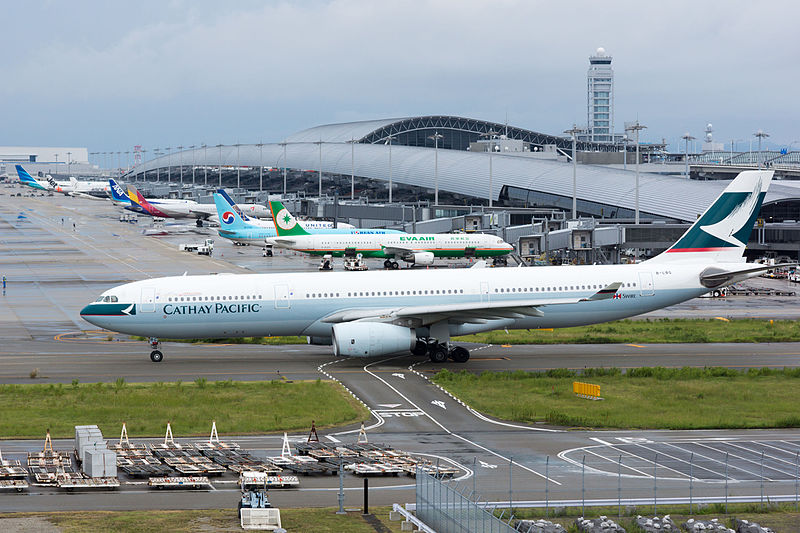Airlines
‘MH370: The Plane That Disappeared’ streaming on Netflix

On March 8, 2014, Malaysian Airlines Flight 370 departed Kuala Lumpur for Beijing on a regular red-eye flight with 239 passengers and crew. No one in command could explain why the plane vanished from radar screens shortly after takeoff. The three-part speculative docuseries MH370: The Aircraft That Disappeared brings together a global network of family members, experts, and investigative journalists who are all still looking for answers nine years after the catastrophe.
Pakistan Airlines flight attendant lands in Toronto, then disappears(Opens in a new browser tab)
What really happened to MH370?
When Malaysian Airlines Flight 370 disappeared in 2014, it plunged the passengers’ next of kin into a waking nightmare. Episode 1 of MH370: The Plane That Disappeared takes a close look into the first few hours and days following the plane’s disappearance, including what happened when conspiracy theories and false accusations started to spiral out of control.
Malaysia regains US FAA’s Category 1 safety rating(Opens in a new browser tab)
Further complicating the story of the disappearance of MH370 was what happened later. In July of that same year, Malaysian Airlines lost another aircraft when MH17 was shot down by a Russian missile. It was recently confirmed by an international team of investigators that there were “strong indications” that it was approved by Russian heads of state, which Russia has denied. In Episode 2 of MH370: The Plane That Disappeared, experts discuss how the chances of two aircraft from the same airline crashing in such a short time frame are infinitesimal, causing the conspiracy theories to go even further.
Who’s featured in MH370: The Plane That Disappeared?
Jeff Wise, science journalist and author of The Plane That Wasn’t There: Why We Haven’t Found MH370, is featured in the docuseries along with reporter and foreign correspondent Florence de Changy. Many of the victims’ next of kin including families from China, Malaysia, Australia and France are interviewed. Says director Louise Malkinson, “[The families] want people to keep talking about this. The families want a platform to be able to say, ‘Come on, it’s been nine years.’ They were all united on that.”
Is the search for MH370 still ongoing?
Authorities officially ended the search for MH370 in 2017, but many independent investigators and aviation experts are still looking for answers. Says journalist Jeff Wise, as long as the plane is not found, “the entire aviation industry has an asterisk next to it.”

Airlines
An A320 plane flew for 28 minutes with both pilots asleep

In a startling incident, an Airbus A320 operated by an Indonesian airline, Batik Air, flew for a harrowing 28 minutes with both pilots asleep at the controls.
The alarming event unfolded on Batik Air Flight 6723, carrying 153 passengers, en route to Soekarno–Hatta International Airport in Jakarta. The saga began when the first officer allowed the captain to take a nap, only to fatigue himself, attributing his drowsiness to caring for his one-month-old twins. As the pilots dozed off, the aircraft veered off-course, prompting concerns from air traffic control (ATC) who lost contact with the flight 90 minutes into its journey.
Despite the pilots being unresponsive for nearly half an hour, ATC managed to track the aircraft using radar as it covered a staggering 210 nautical miles, equivalent to the distance between New York and Washington, D.C. The captain eventually woke up, realizing the perilous situation and rousing his co-pilot.
After correcting the flight path, the captain attributed the radio silence to a “communication problem,” and the plane eventually touched down safely in Jakarta. However, the incident sparked widespread concern and investigation by Indonesia’s transport ministry.
A preliminary report revealed that the second-in-command had not rested adequately before the flight, shedding light on the potential dangers of pilot fatigue. While the identities of the pilots remained undisclosed, the incident underscored the critical importance of ensuring crew members are well-rested and fit for duty.
Despite the gravity of the situation, the swift actions of the awakened captain averted disaster, emphasizing the necessity for robust safety protocols and measures within the aviation industry.
Airlines
Ex-Cathay Pacific A330-300 Destroyed by Fire during Long-Term Storage at Spain

In a dramatic turn of events, an ex-Cathay Pacific Airbus A330 met a fiery end at Ciudad Real Airport in Spain. The aircraft, with a distinguished service history spanning 28 years, was resting in long-term storage at the airport when disaster struck.
Reports emerged detailing the unfortunate incident, painting a picture of destruction and chaos. The once majestic A330, bearing the serial number MSN113, became engulfed in flames while undergoing dismantling procedures. What began as a routine process turned into a nightmare as a fire erupted in the aircraft’s tail section, quickly spreading to consume the entire fuselage.
Emergency responders, including the Civil Guard, medical teams, and law enforcement personnel, swiftly descended upon the scene to contain the inferno. Despite the intensity of the blaze, their coordinated efforts prevented any injuries among both the public and the brave individuals working to quell the flames.
By mid-afternoon, the Ciudad Real fire service declared victory over the fire, announcing its successful extinguishment. However, the aftermath left behind a trail of questions and concerns. Authorities launched an investigation into the cause of the blaze, with initial findings shrouded in mystery.
The head of the airport expressed astonishment at the unprecedented event, highlighting it as the first instance where airport infrastructure had to grapple with such a significant fire-related challenge. As the investigation unfolds, the aviation community awaits answers, hoping to shed light on the circumstances leading to the demise of the retired Airbus A330.
Airlines
Air India’s last VVIP Boeing 747 now found a new home in USA

In a symbolic transition marking the end of a storied chapter in aviation history, Air India bid farewell to its last remaining Boeing 747-400 jumbo jetliners, once revered for ferrying dignitaries including prime ministers, presidents, and vice presidents.
The sale of these iconic aircraft to AerSale, a company based in the United States, signals the closure of a remarkable era for the airline.
The decision to part ways with the Boeing 747s was driven by practical considerations. Tata Group, the new custodian of airindia flights, deemed these majestic planes uneconomical to operate in today’s aviation landscape. As such, out of the four sold, two will be repurposed into freighters, while the remaining pair will be meticulously disassembled to harness their valuable parts.
The transaction, orchestrated by Mumbai-based Vman Aviation Services, underscores the strategic shift in Air India’s fleet management strategy under its new ownership. Tata Group’s decision to divest from the 747s reflects a commitment to optimizing operational efficiency and aligning with contemporary industry standards.
Skytech-AIC, a UK-based remarketing firm engaged by Tata Group, facilitated the sale of these iconic aircraft, marking the conclusion of their illustrious service with Air India. The airline’s last flight featuring the Boeing 747 took to the skies between Delhi and Mumbai in March 2021, encapsulating decades of distinguished service and indelible memories.
The allure of used aircraft parts continues to resonate across the aviation sector, offering operators a cost-effective alternative without compromising on quality or performance. The transfer of these aircraft to AerSale not only ensures their continued utility but also underscores the enduring legacy of Air India’s fleet.



























